What Type Of Molecule Is Used To Atttach New Nucleotides To The Template Strands
Replication is the process by which a double-stranded Deoxyribonucleic acid molecule is copied to produce two identical Deoxyribonucleic acid molecules. Dna replication is one of the most basic processes that occurs inside a cell. Each time a cell divides, the two resulting daughter cells must contain exactly the aforementioned genetic data, or Dna, as the parent prison cell. To accomplish this, each strand of existing DNA acts as a template for replication.
How is Dna replicated?
Replication occurs in three major steps: the opening of the double helix and separation of the Dna strands, the priming of the template strand, and the assembly of the new Deoxyribonucleic acid segment. During separation, the ii strands of the DNA double helix uncoil at a specific location called the origin. Several enzymes and proteins then piece of work together to set up, or prime, the strands for duplication. Finally, a special enzyme called Dna polymerase organizes the associates of the new Deoxyribonucleic acid strands. The post-obit description of this 3-phase procedure applies mostly to all cells, but specific variations within the process may occur depending on organism and cell type.
What triggers replication?
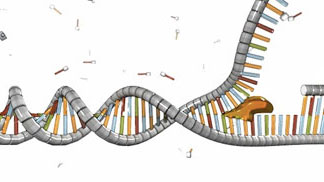
Figure 1: Helicase (yellow) unwinds the double helix.
The initiation of DNA replication occurs in ii steps. First, a so-called initiator poly peptide unwinds a short stretch of the Dna double helix. And then, a protein known equally helicase attaches to and breaks apart the hydrogen bonds between the bases on the Deoxyribonucleic acid strands, thereby pulling autonomously the two strands. As the helicase moves along the DNA molecule, information technology continues breaking these hydrogen bonds and separating the ii polynucleotide chains (Figure one).
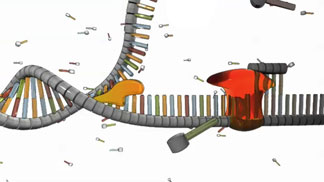
Figure 2: While helicase and the initiator protein (not shown) split the two polynucleotide chains, primase (ruby) assembles a primer. This primer permits the next step in the replication process.
Meanwhile, as the helicase separates the strands, another enzyme called primase briefly attaches to each strand and assembles a foundation at which replication can begin. This foundation is a short stretch of nucleotides called a primer (Figure 2).
How are DNA strands replicated?
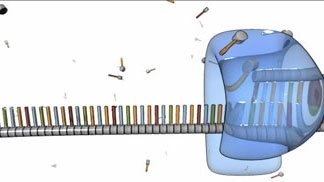
Figure three: Offset at the primer sequence, DNA polymerase (shown in blue) attaches to the original Dna strand and begins assembling a new, complementary strand.
Later the primer is in place on a single, unwound polynucleotide strand, DNA polymerase wraps itself effectually that strand, and it attaches new nucleotides to the exposed nitrogenous bases. In this style, the polymerase assembles a new Deoxyribonucleic acid strand on tiptop of the existing i (Figure iii).
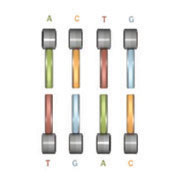
Figure 4: Each nucleotide has an affinity for its partner. A pairs with T, and C pairs with G.
As Deoxyribonucleic acid polymerase makes its way down the unwound DNA strand, it relies upon the pool of free-floating nucleotides surrounding the existing strand to build the new strand. The nucleotides that make up the new strand are paired with partner nucleotides in the template strand; because of their molecular structures, A and T nucleotides e'er pair with one another, and C and Thousand nucleotides always pair with one another. This phenomenon is known as complementary base of operations pairing (Effigy 4), and it results in the production of two complementary strands of DNA.
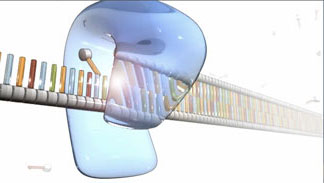
Figure 5: A new Deoxyribonucleic acid strand is synthesized. This strand contains nucleotides that are complementary to those in the template sequence.
Base pairing ensures that the sequence of nucleotides in the existing template strand is exactly matched to a complementary sequence in the new strand, also known as the anti-sequence of the template strand. Later, when the new strand is itself copied, its complementary strand will contain the aforementioned sequence as the original template strand. Thus, as a outcome of complementary base pairing, the replication process proceeds equally a series of sequence and anti-sequence copying that preserves the coding of the original Dna.
How long does replication accept?
In the prokaryotic bacterium Due east. coli, replication tin can occur at a rate of 1,000 nucleotides per second. In comparison, eukaryotic human Dna replicates at a rate of 50 nucleotides per second. In both cases, replication occurs so apace considering multiple polymerases can synthesize two new strands at the same fourth dimension by using each unwound strand from the original DNA double helix as a template. Ane of these original strands is chosen the leading strand, whereas the other is chosen the lagging strand. The leading strand is synthesized continuously, equally shown in Effigy 5. In contrast, the lagging strand is synthesized in minor, dissever fragments that are eventually joined together to form a complete, newly copied strand.
Watch this video for a summary of Dna replication in eukaryotes
What Type Of Molecule Is Used To Atttach New Nucleotides To The Template Strands,
Source: http://www.nature.com/scitable/topicpage/cells-can-replicate-their-dna-precisely-6524830
Posted by: schellfromen.blogspot.com


0 Response to "What Type Of Molecule Is Used To Atttach New Nucleotides To The Template Strands"
Post a Comment